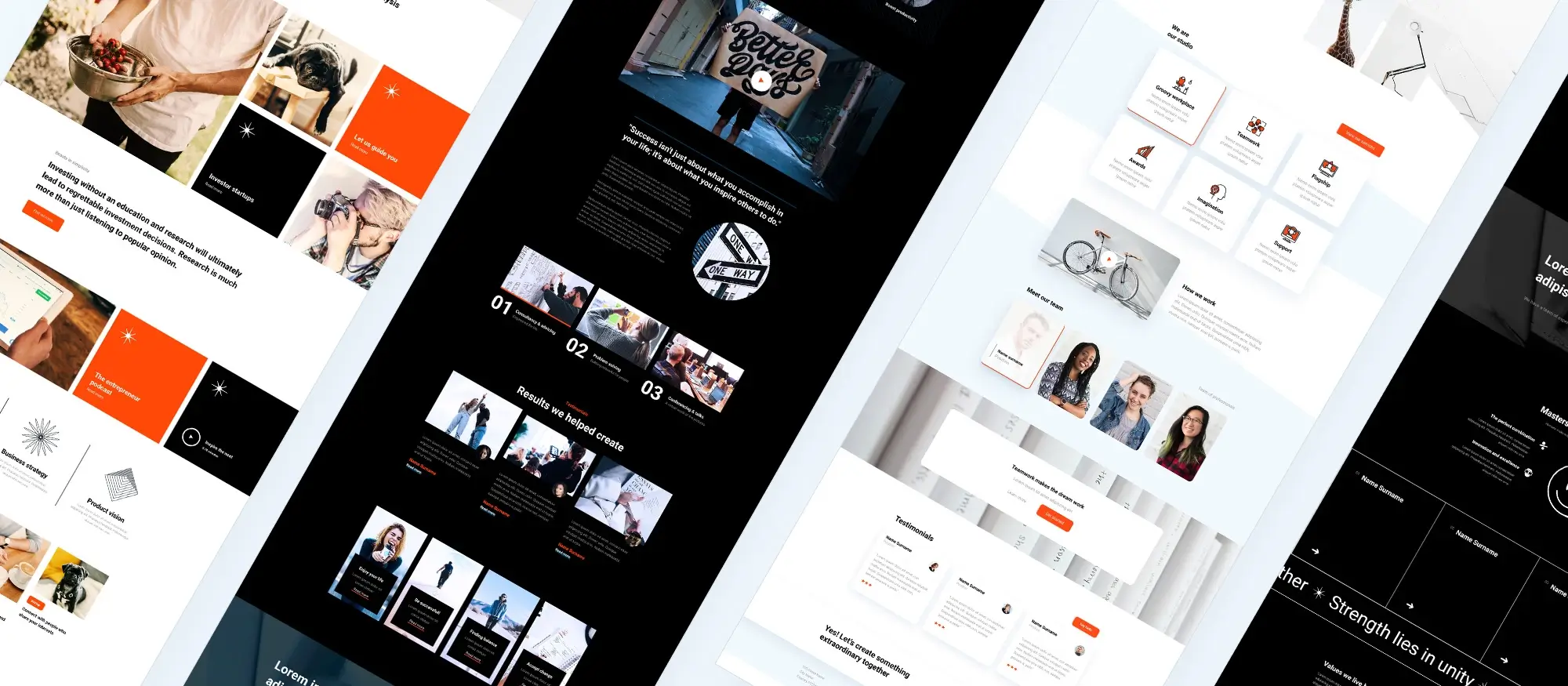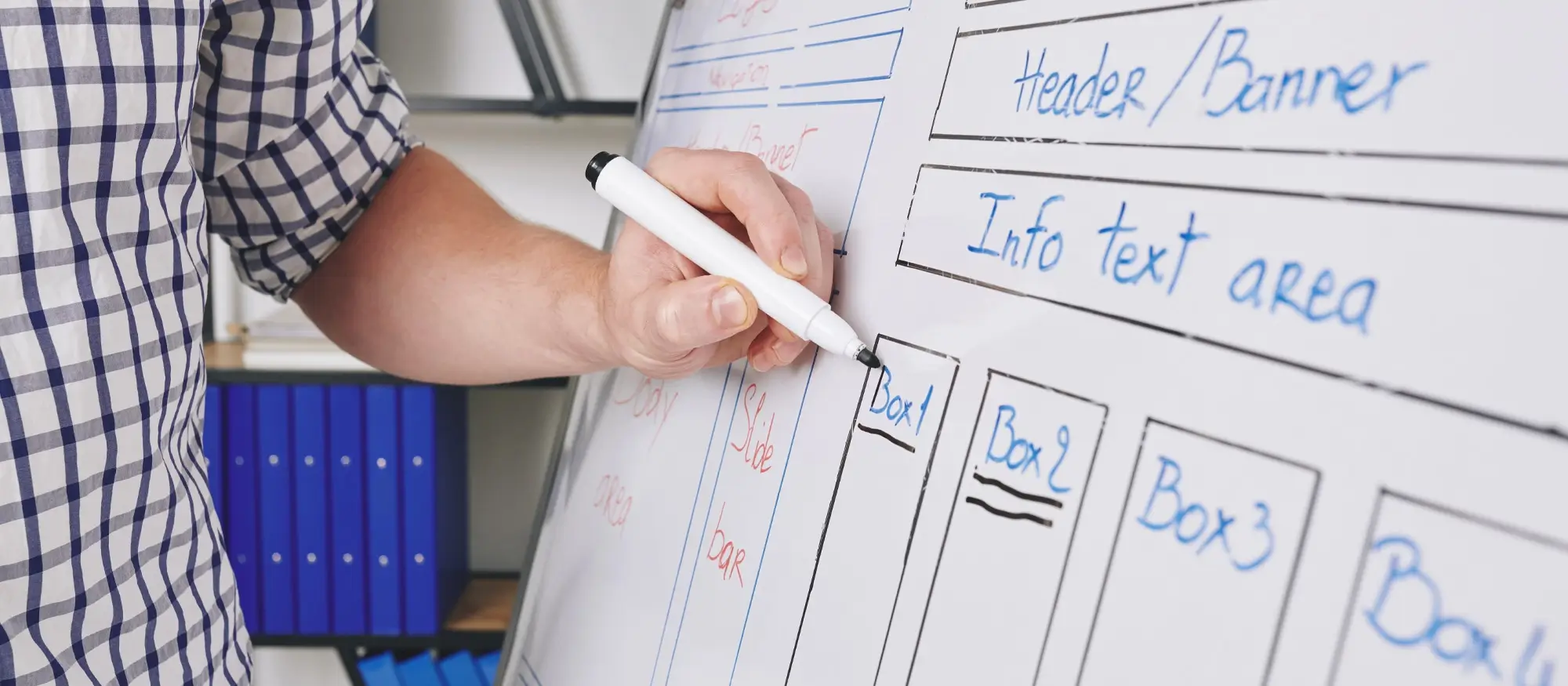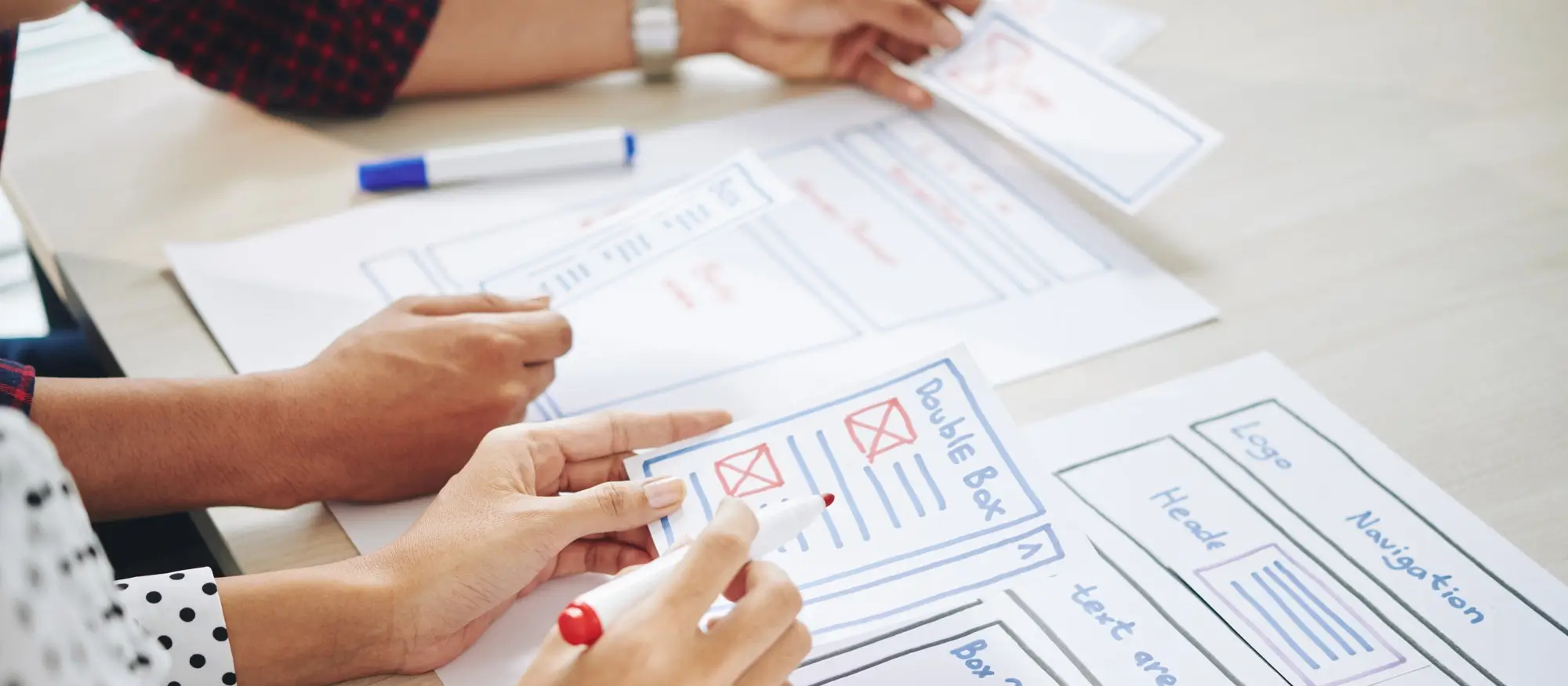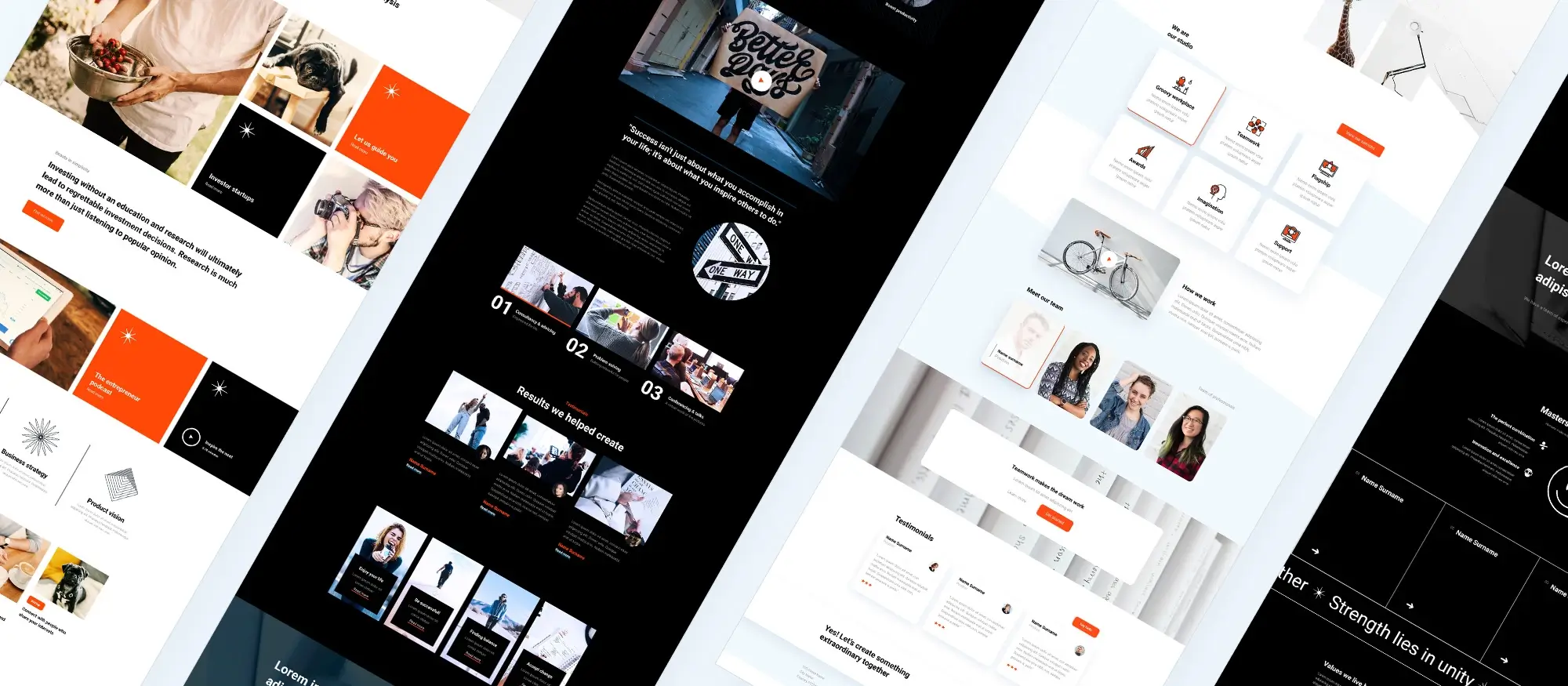How to design a stunning WordPress website: Tips and tricks
Try MaxiBlocks for free with 500+ library assets including basic templates. No account required. Free WordPress page builder, theme and updates included.

Updated 15th May 2025
Tips for designing a successful WordPress website
Choosing the right WordPress block theme
Selecting the right theme is one of the first and most important steps when designing your WordPress site. Your theme should match the purpose of your site and offer good options for customisation. If you are creating a blog, themes like Astra or GeneratePress are worth considering because they provide clean layouts and flexible features. If you are building an online shop, Storefront is a good choice because it is designed to work perfectly with WooCommerce.
It is also vital to choose a theme that looks good on all devices. Many people will be visiting your site on their phones or tablets, so a mobile-friendly design is essential. For example, a local restaurant needs a responsive theme so that customers can easily browse the menu and make reservations on their mobiles.
Before you settle on a theme, take some time to read reviews and check ratings. This will help you spot any common issues and make a more informed choice. Many review websites and WordPress community forums can give you valuable feedback from real users.
Focusing on speed and performance
Making sure your website loads quickly is crucial for keeping visitors happy and encouraging them to explore your content. Start by optimising your images so they load faster but still look good. Tools like TinyPNG or ImageOptim can help you reduce image file sizes without sacrificing quality. This is especially useful for photographers or creatives who need to display high-quality visuals without slowing down their site.
Installing a caching plugin is another smart move. A plugin like W3 Total Cache can speed up your site by saving static versions of your pages, reducing the time it takes for them to load. This is particularly important for business websites that might experience sudden traffic spikes, such as during sales or promotions.
Another helpful tip is to use a content delivery network, or CDN. A service like Cloudflare stores copies of your site on servers around the world, so visitors always get the fastest possible load times no matter where they are based. This can make a real difference if your site attracts an international audience.
By paying careful attention to your theme choice, site speed and performance, you will build a WordPress website that not only looks good but also provides a smooth, enjoyable experience for all your visitors.

Key design principles for a successful WordPress website
Keeping the design clean and simple
A clean and simple design is always a wise choice for any website. Avoid clutter by using plenty of whitespace, which makes the content easier to read and helps visitors focus on what is important. If you look at websites like Apple’s, you will see how effective a minimalist approach can be, using open space to draw attention to products without overwhelming the user.
When you keep your design simple, it improves the overall user experience. Visitors find it easier to navigate and can focus on your content without unnecessary distractions. If you are running a blog, make sure that your posts are easy to read with a clear layout. Try to avoid packing your sidebar with too many widgets, as this can pull attention away from your main articles.
It is a good idea to limit yourself to two or three fonts and colours across your site. This keeps the design looking cohesive and professional. A graphic designer’s portfolio, for example, benefits from a simple design that lets the work itself shine without competing with the website design.
Creating user-friendly navigation
Navigation plays a huge role in how users experience your site. Menus should be clear and easy to follow. Consider adding breadcrumb navigation, which shows users exactly where they are on your site and helps them move back to previous sections easily. This is particularly helpful for larger websites, like an online shop with several product categories and subcategories.
It also helps to be specific when naming your menu items. Rather than generic labels like “Services” or “Products,” use more descriptive terms that tell users exactly what to expect. For example, a travel agency might have menu items called “Adventure Tours” or “Family Packages.” Clear labelling makes it quicker for visitors to find what they are looking for and improves their overall experience on your site.
By keeping your design simple and your navigation user-friendly, you will create a WordPress website that is easy to use and leaves a positive impression on every visitor.
Subscribe to our newsletter
Visual elements for designing a successful WordPress website
Ensuring readability with typography
Choosing the right fonts is an important part of website design. Good typography not only makes your site look polished but also ensures that your content is easy to read. Pick fonts that are clear and simple, and make sure the size and spacing are comfortable for reading across different devices. A good example is The Guardian’s website, where different font styles and sizes are used to clearly separate headlines, subheadings, and body text. This makes it easy for visitors to scan the page and find the information they are looking for.
It is important to test how your text appears on a range of devices, from large desktop monitors to small mobile phones. This helps ensure that your content is always easy to read, whether someone is browsing at work or on the go. A corporate website, for instance, must make sure that its important information is accessible and easy to understand for all visitors, no matter what device they are using.
Using colours effectively
Your colour scheme plays a big role in how your site looks and feels. It should reflect your brand identity and create a visually appealing experience for visitors. Consistency is key, but it is just as important to make sure there is enough contrast between your text and background. Poor contrast can make it difficult to read content, frustrating visitors and driving them away.
For example, a charity focused on the environment might use shades of green to reinforce their mission while ensuring the text stands out clearly against the background. Using online colour contrast checkers can help you make sure your colour choices support readability. A health and wellness blog might choose calming colours like blues and greens, but it must still check that any text placed over these colours is easy to read.
By focusing on clear typography and thoughtful use of colour, you can create a WordPress website that is not only attractive but also user-friendly and accessible to all visitors.

Building a secure and search-friendly WordPress website
Implementing good SEO practices
Applying good SEO practices helps ensure that your website is easily found by search engines and attracts the right visitors. One useful tool for this is the Yoast SEO plugin, which guides you in optimising your pages and posts. It reminds you to use clear titles, proper meta descriptions and relevant keywords, all of which are important for search rankings. Adding descriptive alt text to your images is also a simple but important step that helps both accessibility and SEO. An online recipe blog, for instance, can boost its visibility by using detailed descriptions for food images, making it easier for search engines to understand and index the content.
Keeping your content and meta descriptions fresh is another important part of good SEO. Websites like tech news platforms need to regularly update their articles to stay current and relevant. The same applies to any WordPress site that wants to maintain or improve its position in search results. Regular updates show search engines that your site is active, which can give you an advantage over stagnant websites.
Ensuring site security
Keeping your WordPress website secure is essential to protect your visitors and your data. Installing a reliable security plugin can help defend against common threats such as malware or hacking attempts. However, security does not stop there. You also need to keep WordPress itself, your themes and all plugins updated. Updates often include patches for known vulnerabilities, so ignoring them leaves your site at risk. A financial advisory website that handles sensitive client information, for example, must be especially vigilant in maintaining strong security standards.
Enabling two-factor authentication for your WordPress login adds an extra layer of protection and is a good idea for any site that handles important information. An online store, for example, benefits from additional security measures by helping to safeguard customer data and payment transactions. A secure website not only protects you and your visitors but also builds trust, which is crucial for your long-term success.
Build like a pro
Designing a user-friendly and engaging WordPress website
Adding interactive elements
Introducing interactive elements to your website helps make it more engaging for visitors. Simple features like forms, quizzes, and call-to-action buttons encourage users to take part rather than just browse passively. Adding social sharing buttons is another easy way to help people spread your content to a wider audience. For example, a fitness website could feature interactive workout plans or quizzes that recommend exercises based on user preferences, making the experience much more personalised and engaging.
Plugins like WPForms or Ninja Forms are great tools for creating and managing forms without needing coding skills. A nonprofit organisation’s site could use forms to allow visitors to sign up for newsletters, register for events or make donations easily. These small interactions can make a big difference in helping visitors connect with your cause or business.
Testing and gathering feedback with WordPress website design
Regular testing and collecting feedback is essential for building a successful website. Real user feedback offers valuable insights that you might not spot yourself. Tools like Google Analytics can show how visitors navigate your site, what pages they spend time on and where they drop off. An educational website, for example, might use surveys to ask students and parents what content they find most useful, then make adjustments based on their responses.
Setting up heatmaps is another effective trick to understand user behaviour. Heatmaps show you where users click most often and can reveal which areas of your site attract the most attention. An online magazine could use this data to highlight popular categories and ensure that the most engaging content is easy to find. Regular testing and feedback keep your site improving, helping you meet the needs of your visitors over time.
By focusing on interaction and consistently seeking to improve through feedback, you can create a WordPress site that not only looks good but also offers a rewarding experience to everyone who visits.

Final thoughts on WordPress website design
WordPress website design has changed a lot over the years. It is no longer just about picking a theme and adding some text and pictures. Today, it is about creating an experience that is fast, easy to use, and looks good on any device. A well-designed WordPress website helps you build trust, connect with your audience, and achieve real results whether that is more customers, more readers, or simply a better online presence.
The beauty of WordPress is how flexible it can be. You can create anything from a simple blog to a complex business website. The key is not just making it look attractive but making sure it works well for the people who visit it. Good design is about clear navigation, fast loading times, readable text, and making sure everything works smoothly on both phones and computers.
What makes a WordPress website stand out
A great WordPress site always puts the user first. It is not just about fancy graphics or animations. It is about helping people find what they need quickly and making the experience enjoyable. Simple layouts, clear headings, and properly sized images go a long way towards keeping people engaged.
Speed matters too. Nobody enjoys waiting for a page to load. Choosing lightweight themes, optimising your images, and using smart plugins can make a big difference. Making sure your website is easy to update is just as important. WordPress tools like MaxiBlocks make this easier by giving you modern design blocks and templates you can customise without touching a line of code.
It is also worth remembering that good design helps with SEO. When your website is well organised, loads quickly, and works properly on mobile devices, search engines are more likely to rank it higher. A tool like MaxiBlocks Go theme can give you a strong starting point, offering layouts that are designed for speed and responsiveness straight out of the box.
Bringing it all together
If you want your WordPress website to perform at its best, design should never be an afterthought. It is part of how you tell your story, build your brand, and create a space where visitors feel welcome and confident.
If you are ready to create a website that looks good, loads fast, and is easy to manage, take a look at MaxiBlocks. It gives you the flexibility to design pages the way you want without slowing down your site. Whether you are starting from scratch or refreshing an old site, MaxiBlocks can help you build a better WordPress website without the usual stress.
Stunning WordPress website: tips and tricks to make your site stand out
Creating a stunning WordPress website doesn’t require a design degree – just the right tools, some smart strategies, and a clear plan. Start by diving into WordPress website design tutorials that cover the essentials, then apply practical WordPress website design tips to elevate your pages with better layout, spacing, and flow.
If you’re building a business site, the WordPress website design for small business guide will help you strike the perfect balance between professionalism and personality. Behind every beautiful site is a strong foundation in WordPress design and development, so understanding the backend as much as the visuals matters. You can also boost your design confidence by learning the basics of WordPress web design and prioritising optimising user experience to keep visitors engaged.
One of the most overlooked design tips is to ensure your site works on all devices. That’s where WordPress responsive design comes in. Whether you’re working with a WordPress website designer or going solo, exploring successful WordPress website designs and analysing the best WordPress website designs can give you a creative boost.
If you’re wondering how do I design my own WordPress website, resources like the MaxiBlocks design library offer plug-and-play elements that make design faster and more intuitive. To get the most out of your blocks, the WordPress guide to choosing a block addon can help you pick tools that match your goals without slowing down your site.
With these tips and tricks in hand, your journey to creating a truly stunning WordPress website is well underway.
Inspiring WordPress designs for any type of site
Explore creative WordPress designs that balance style, performance, and usability.
FAQs – WordPress website design
What is WordPress website design?
WordPress website design is the process of creating the layout, look, and feel of a website using the WordPress platform. It involves choosing a theme, customising visual elements like colours, fonts and images, organising content, and ensuring the site is responsive and user friendly.
Why choose WordPress for website design?
WordPress is flexible, easy to use, and offers thousands of themes and plugins. It allows you to build anything from simple blogs to complex business websites without needing to code, making it a popular choice for individuals and businesses alike.
How do I start designing a WordPress website?
You start by installing WordPress, selecting a suitable theme, creating essential pages like Home, About and Contact, and customising the site using the WordPress Customiser, the block editor or a page builder for greater design control.
Do I need a special theme for WordPress website design?
You do not need a special theme, but choosing a high-quality, responsive, and well-supported theme is important. Look for a theme that matches your style, offers easy customisation and is optimised for performance and SEO.
Can I design a WordPress website without coding?
Yes, WordPress makes it easy to design a website without writing any code. The visual editor, block patterns, drag-and-drop builders and theme options allow you to create a professional-looking site through simple settings and tools.
What are the key elements of good WordPress website design?
Important elements include a clean layout, consistent branding, easy navigation, fast loading speeds, mobile responsiveness, high-quality images, strong calls to action and optimised SEO structure.
How important is mobile responsiveness in WordPress design?
Mobile responsiveness is essential because a significant percentage of web traffic comes from mobile devices. A responsive design ensures your website looks good and functions properly on screens of all sizes.
What role do plugins play in WordPress website design?
Plugins enhance website design by adding features like sliders, contact forms, galleries and interactive elements. They allow you to extend your site’s capabilities and improve both functionality and user experience.
Should I use a page builder for WordPress website design?
Page builders like Elementor, Beaver Builder and Divi offer greater flexibility in design by letting you visually create and edit complex layouts. They are especially useful if you want custom designs without needing coding skills.
Can I redesign my WordPress website later?
Yes, WordPress websites are easy to redesign. You can change themes, update layouts, refresh content and add new design features whenever you want, helping to keep your website modern and engaging.
WordPress itself
Official Website
wordpress.org – This is the official website for WordPress, where you can download the software, find documentation, and learn more about using it.
WordPress Codex
codex.wordpress.org/Main_Page – This is a comprehensive documentation resource for WordPress, covering everything from installation and configuration to specific functionality and troubleshooting.
WordPress Theme Directory
wordpress.org/themes – The official WordPress theme directory is a great place to find free and premium WordPress themes. You can browse themes by category, feature, and popularity.
maxiblocks.com/go/help-desk
maxiblocks.com/pro-library
www.youtube.com/@maxiblocks
twitter.com/maxiblocks
linkedin.com/company/maxi-blocks
github.com/orgs/maxi-blocks
wordpress.org/plugins/maxi-blocks

Kyra Pieterse
Author
Kyra is the co-founder and creative lead of MaxiBlocks, an open-source page builder for WordPress Gutenberg.
You may also like

